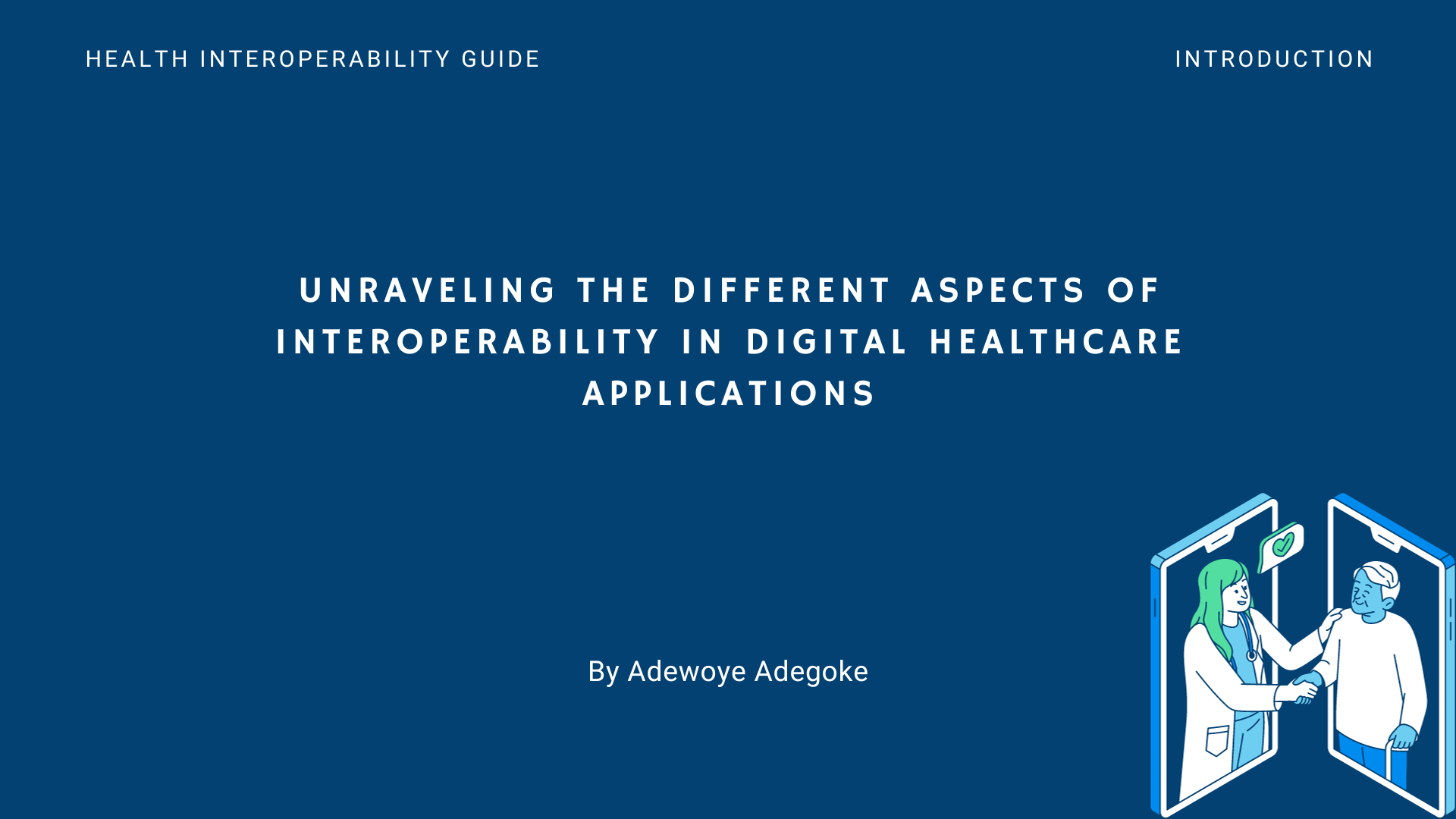Levels of Digital Healthcare Interoperability
Interoperability in healthcare is categorized into three distinct levels, each with its role in ensuring seamless data exchange.
In this article, we will explore the different levels of interoperability (foundational, structural, semantic) and their roles, provide real-world examples, and discuss the challenges associated with achieving different levels of interoperability.
Foundational Interoperability
Foundational interoperability is the basic level of interoperability that enables systems to exchange data, but it does not ensure that the data can be understood or used effectively.
It allows for the transfer of data from one system to another, often using simple data exchange formats like XML or JSON.
An example of foundational interoperability is sending a patient's medical record from one hospital's EHR system to another hospital's EHR system without considering whether both systems can interpret the data in a meaningful way.
Another scenario is a case of two hospitals exchanging patient demographic information using a common data format like XML, allowing the recipient system to parse and store the data.
Challenges associated with this level of interoperability include:
- Ensuring systems can exchange data in a compatible and mutually acceptable format.
- Addressing security concerns when transmitting data between systems.
- Achieving timely data transfer without delays.
Structural Interoperability
Structural interoperability builds on foundational interoperability by specifying the structure and format of data exchange. It ensures that data is exchanged in a consistent, organized manner.
This level defines the standards for data formatting, including the arrangement of data elements, codes, and schemas.
An example is ensuring that when two EHR systems exchange patient data, they both use the same standard format for recording and presenting information, such as HL7's Clinical Document Architecture (CDA).
Another scenario is two healthcare systems exchanging radiology images in DICOM (Digital Imaging and Communications in Medicine) format. Both systems understand the structure of DICOM files, ensuring proper display and storage of the images.
Challenges associated with this level include:
- Encouraging healthcare organizations to adopt and adhere to common data exchange standards.
- Mapping data elements between different systems to ensure consistency.
- Managing compatibility issues when systems use different versions of the same standard.
Semantic Interoperability
Semantic interoperability is the highest level of interoperability, where systems not only exchange data but also understand the meaning of the data. It allows for meaningful interpretation and use of information.
At this level, data is not just exchanged in a structured format; it is also accompanied by a shared understanding of its meaning, including medical codes and terminology.
An example is when two healthcare systems exchange patient data, they agree on the format and understand that a certain code (e.g., ICD-10 for diagnoses) represents specific medical conditions and can be used for clinical decision support.
Another scenario is when a primary care physician electronically sends a patient's medical history, including diagnosis codes (ICD-10), to a specialist. The specialist's system not only receives the data but also understands the clinical context and can use it for decision support and treatment planning.
Challenges associated with this level of interoperability include:
- Ensuring that systems use consistent medical terminologies and code sets (e.g., SNOMED CT, LOINC).
- Overcoming differences in data representations and meanings across diverse systems.
- Integrating semantic interoperability into clinical workflows to ensure meaningful use of exchanged data.
General challenges
Having highlighted the challenges associated with each level, there are general challenges that cut across all levels of interoperability. these challenges include:
- Implementing interoperability solutions can be costly and resource-intensive for healthcare organizations.
- Healthcare providers and organizations may resist adopting new interoperable systems due to workflow disruptions and learning curves.
- Ensuring the privacy and security of patient data during exchange is a persistent challenge.
- Meeting regulatory requirements and standards (e.g., HIPAA) adds complexity to achieving interoperability.
Understanding the levels of Interoperability, their roles, and challenges, and addressing these challenges is essential for healthcare organizations and policymakers to realize the full potential of interoperability, from basic data exchange to meaningful use of data that enhances patient care and outcomes.
Next article we will discuss the importance and role of standards and protocols (e.g., HL7, FHIR, DICOM) in healthcare interoperability.


